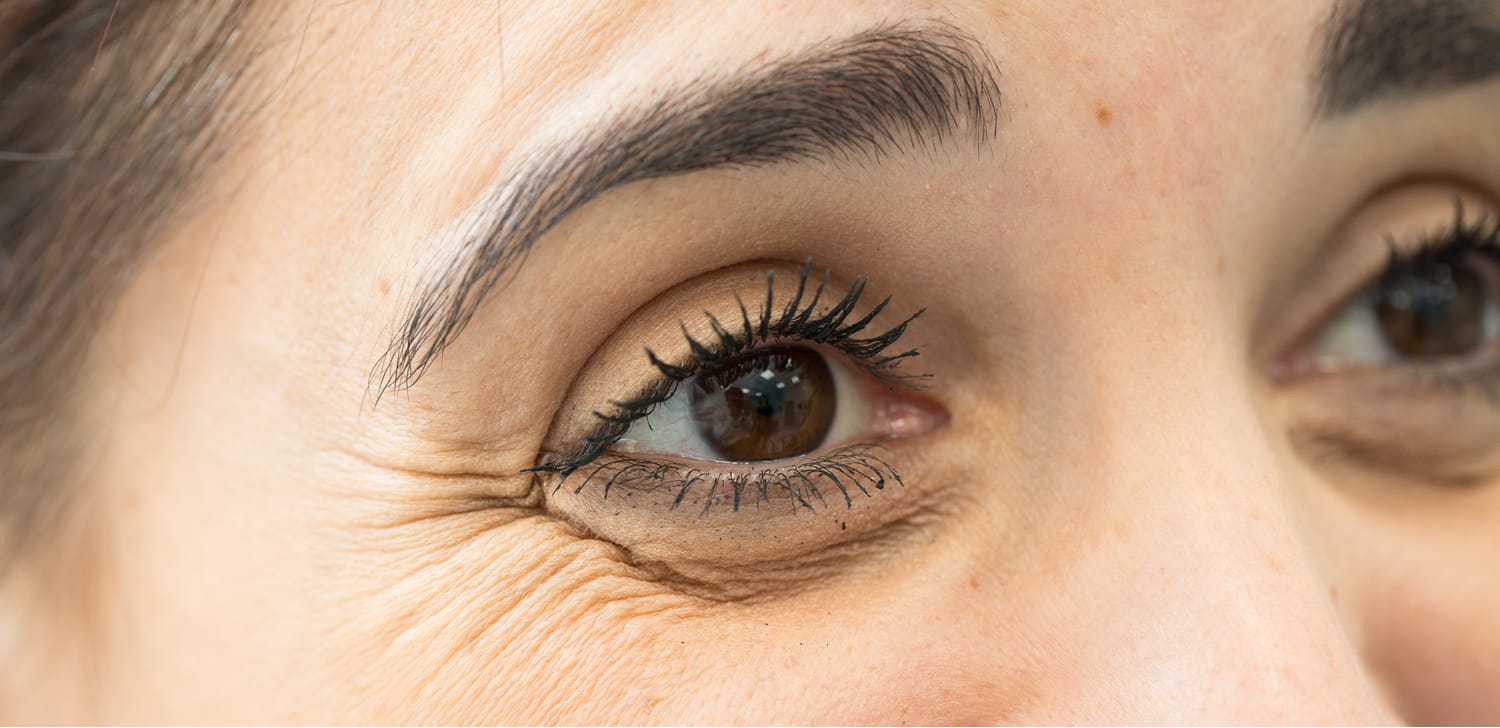Crow’s feet are wrinkles in the skin at the corner of your eyes that appear due to muscle contraction. The skin around your eyes is approximately 40% thinner than it is on the rest of your face, so wrinkles and lines appear more quickly in this area. Although the formation of crow’s feet is completely normal as you age, it can diminish your confidence. Luckily, there are multiple options to prevent these wrinkles and to treat them when they occur.
What Causes Crow’s Feet?
Collagen is the main structural protein in your skin and gives it its plumpness. As you age, collagen production starts to slow down and the skin becomes thinner and weaker. Elastin, which is responsible for elasticity, also decreases with age. Any facial expressions and movement of the face, including blinking, along with this natural reduction of collagen and elastin, slowly contributes to crow’s feet formation.
However, crow’s feet, expression lines, and other wrinkles can happen at any age. Too much sun exposure is one reason for this. The ultraviolet (UV) rays in sunlight may increase the presence of free radicals in your skin. These damage your cellular DNA and can accelerate wrinkle formation.
How to Prevent Wrinkles
Although everyone will eventually get some wrinkles, there are some actions you can take to prevent crow’s feet from forming. Using an eye cream each day can help reduce the loss of collagen and moisturize your skin. Wearing sunscreen can also help. Eating healthy foods and staying hydrated are two more preventive steps you can take.
Treatments for Crow’s Feet
Even if you follow all the steps for prevention, you are likely to develop crow’s feet at some point in your life. If you want to correct these wrinkles, there are a few different treatment options. They may be used together or separately depending upon your specific needs.
Dysport
Dysport is a botulinum toxin type A injection that works by blocking nerve signals to muscles at the injection site. As a result, the muscles are unable to move and dynamic wrinkles, including crow’s feet, are softened. Studies have found that a large majority of both patients and doctors are very satisfied with the results of these injections. Dysport does come with some risks, although most side effects are minor and temporary. We will discuss these in detail with you at your consultation to determine if Dysport is the best option for you.
Dermal Fillers
Whereas Dysport smooths wrinkles by stopping your muscles from contracting, dermal fillers add volume to fill in crow’s feet and/or other types of creases in your skin. Many use hyaluronic acid, which is a naturally occurring substance in your body, to plump your skin and give it a more nourished appearance. In many cases, we can combine dermal filler injections with Dysport to achieve the best possible results.
Does Eyelid Surgery Treat Crow’s Feet?
Since blepharoplasty (eyelid surgery) is used for cosmetic adjustments to your eye area, some patients want to know if it can correct wrinkles. Eyelid surgery tightens drooping eyelids but it does not reduce the appearance of any existing wrinkles or prevent them from forming. However, you may choose to combine this surgical procedure with Dysport and/or dermal fillers to get a more youthful appearance.
Reduce Wrinkles with Hess and SAndeen
If you want to reduce the appearance of crow’s feet and other wrinkles, Dr. Hess and Dr. Sandeen can help. We are board-certified plastic surgeons who are experienced with Dysport and other non-surgical methods for cosmetic enhancement. We can combine treatments and surgeries to help you look younger and feel more confident.










